Abstract
1. The South American amphibian Phyllomedusa sauvagei contains in its skin large amounts of a polypeptide closely resembling caerulein in its pharmacological actions. This polypeptide, called phyllocaerulein, was obtained in a pure form, and upon acid hydrolysis, enzymic digestion and end-group determination experiments it proved to be a nonapeptide of the following composition Pyr-Glu-Tyr(SO3H)-Thr-Gly-Trp-Met-Asp-Phe-NH2
It may be seen that caerulein and phyllocaerulein have in common the C-terminal heptapeptide and the N-terminal pyroglutamyl residue.
2. Phyllocaerulein is indistinguishable from caerulein even in parallel bioassay. However, the former polypeptide seems to be somewhat more potent than the latter on all the preparations tested.
3. In different batches of Phyllomedusa sauvagei skin the phyllocaerulein content ranged between 150 and 600 μg/g of fresh tissue.
Phyllocaerulein or similar polypeptides occur also in the skin of several other Phyllomedusa species, among which are Phyll. burmeisteri, Phyll. dachnicolor, Phyll, helenae, Phyll. annae, Phyll. callidryas and Phyll. bicolor.
4. The qualitative identification and quantitative estimation of caerulein-like polypeptides in crude skin extracts may be complicated by the concomitant occurrence of other active polypeptides. These, however, are poorly effective on some test preparations which seem to respond selectively to caerulein.
5. Like that of caerulein, the biological significance of phyllocaerulein is completely obscure.
Full text
PDF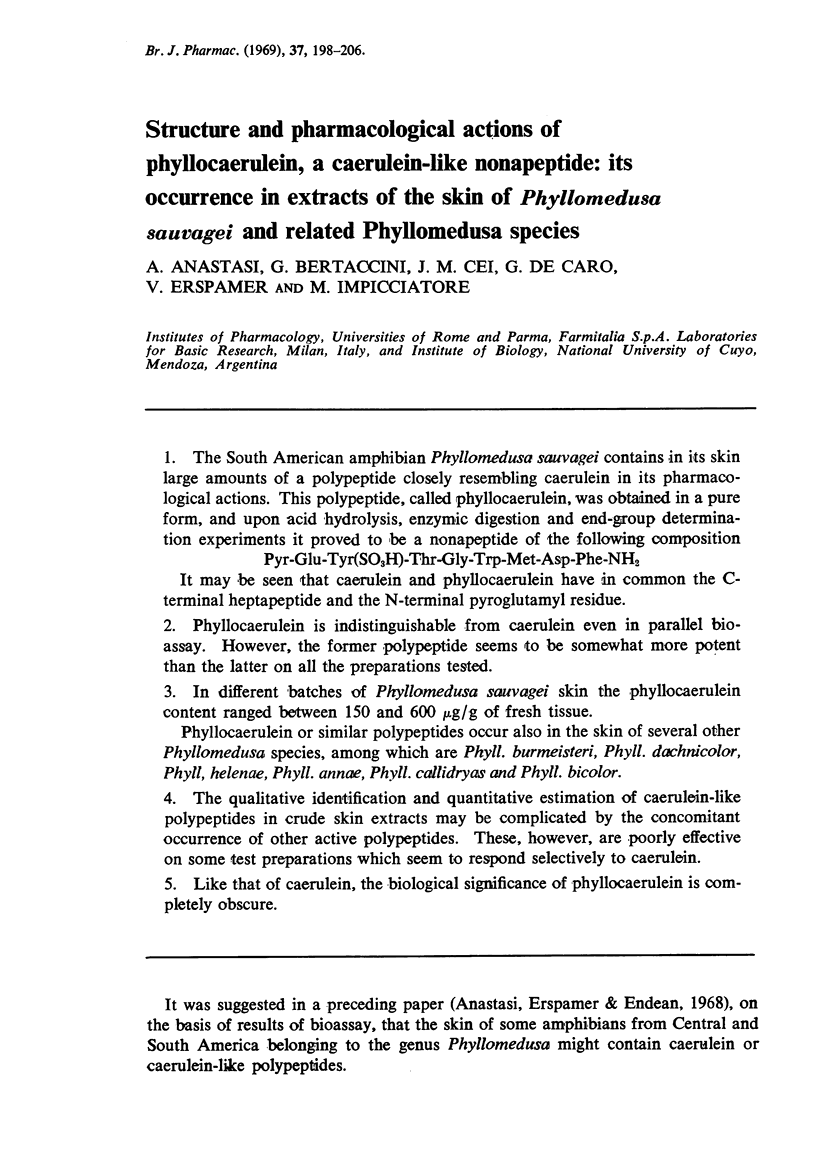


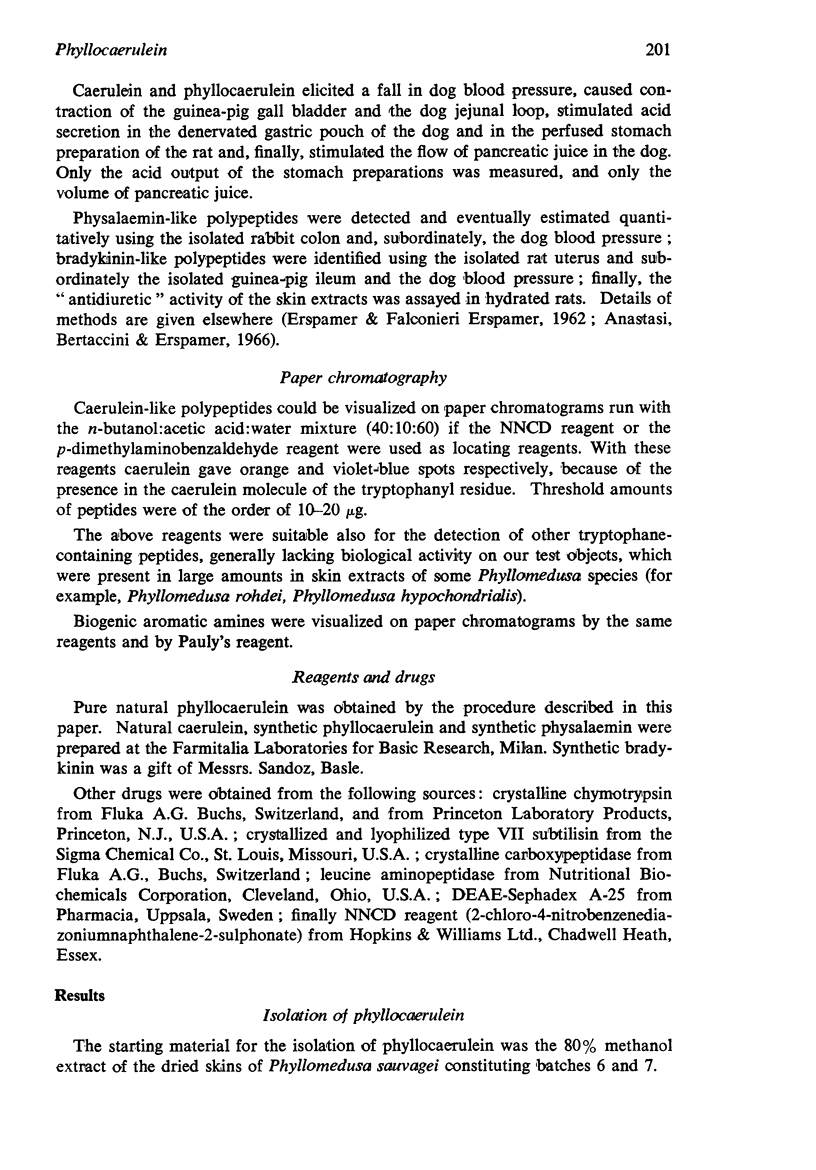
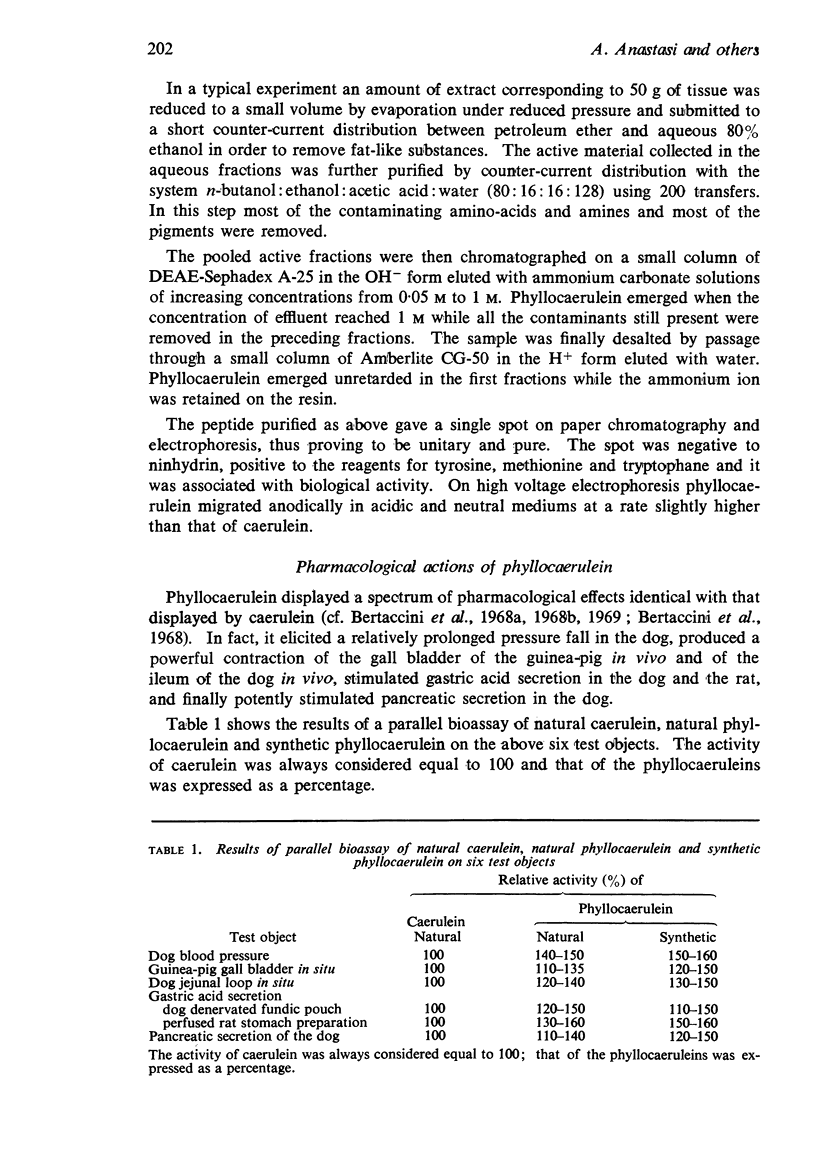
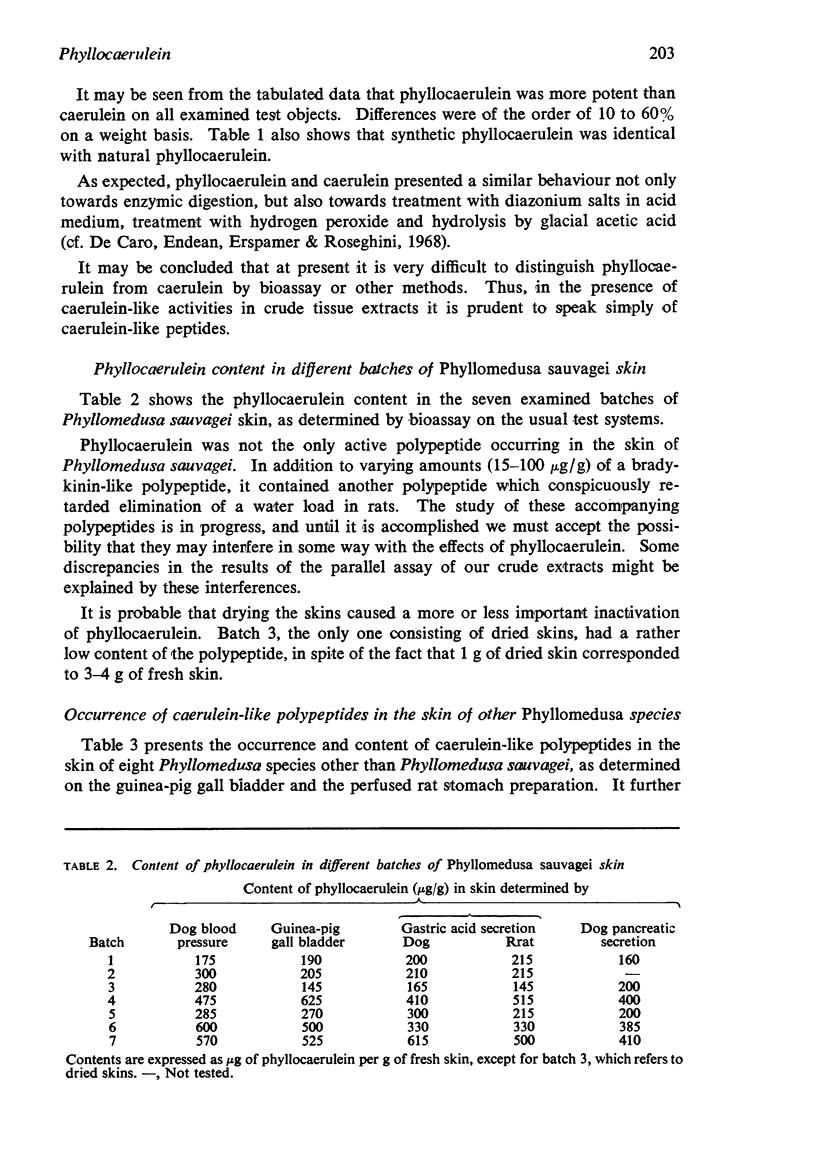

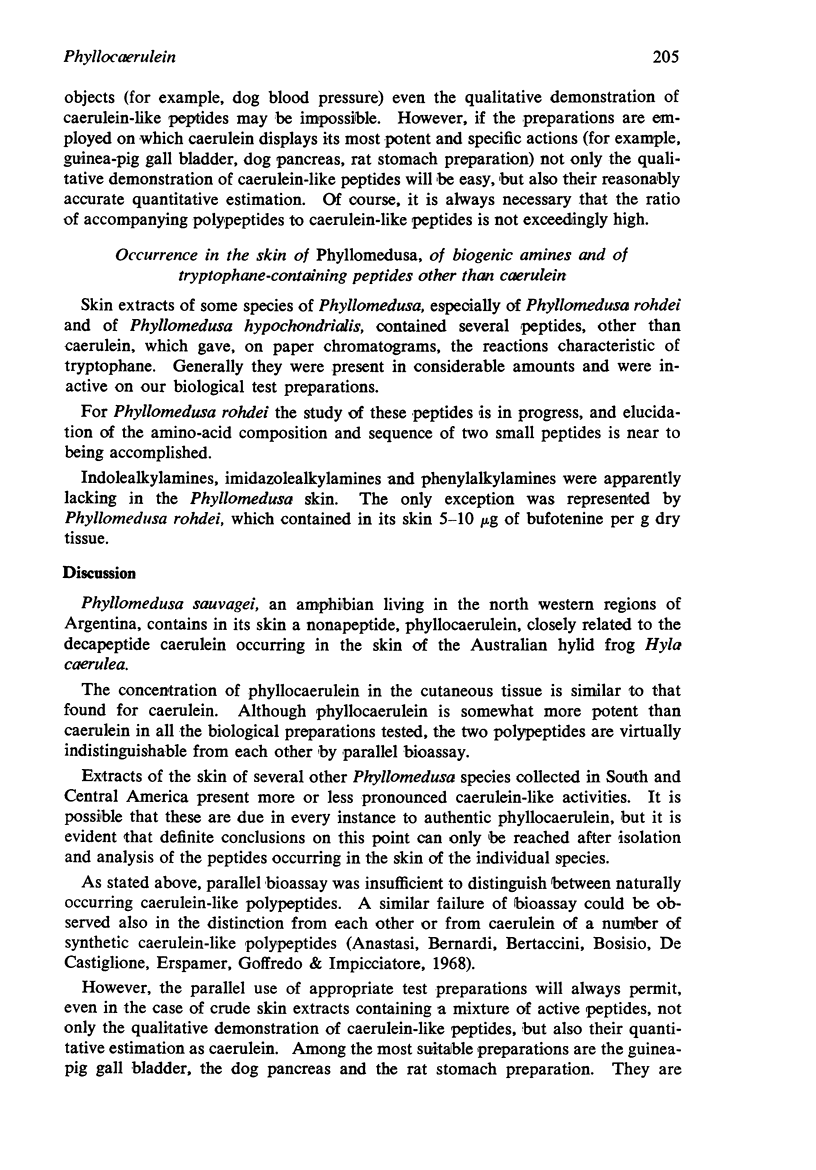
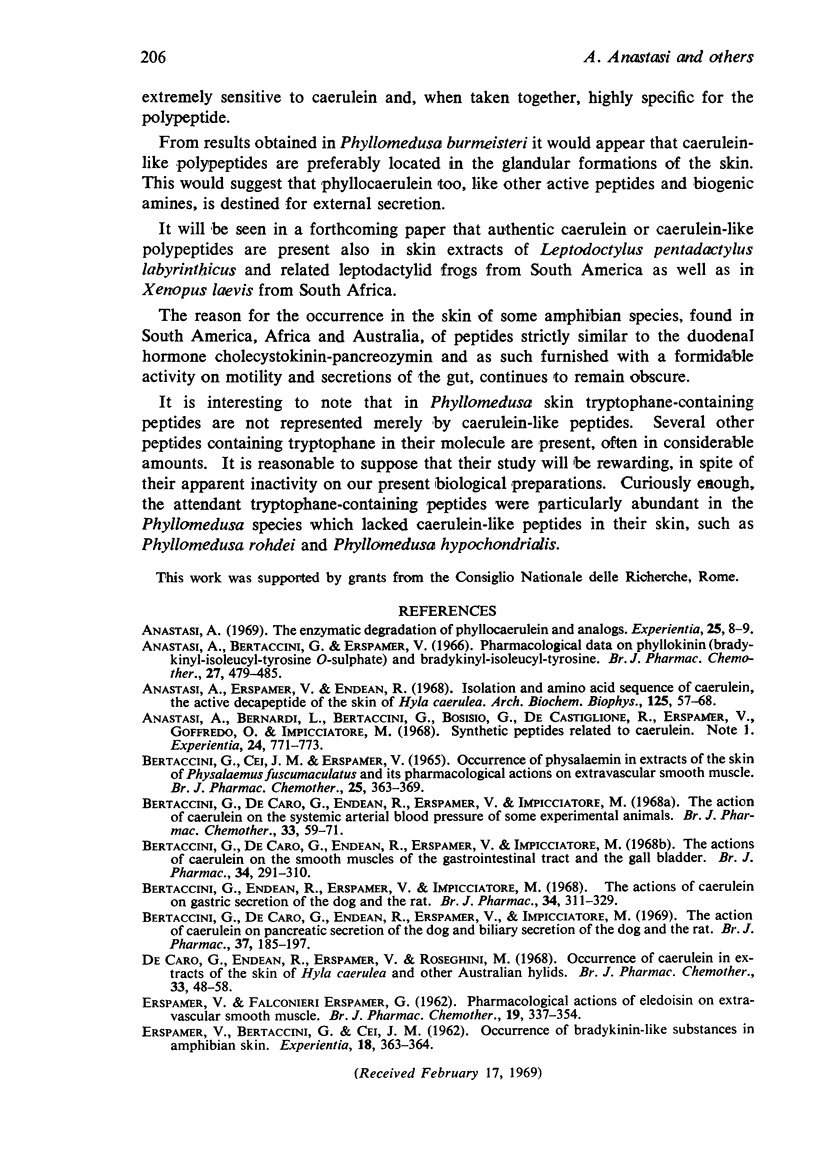
Selected References
These references are in PubMed. This may not be the complete list of references from this article.
- Anastasi A., Bernardi L., Bertaccini G., Bosisio G., De Castiglione R., Erspamer V., Goffredo O., Impicciatore M. Synthetic peptides related to caerulein. 1. Experientia. 1968 Aug 15;24(8):771–773. doi: 10.1007/BF02144858. [DOI] [PubMed] [Google Scholar]
- Anastasi A., Bertaccini G., Erspamer V. Pharmacological data on phyllokinin (bradykinyl-isoleucyl-tyrosine o-sulphate) and bradykinyl-isoleucyl-tyrosine. Br J Pharmacol Chemother. 1966 Sep;27(3):479–485. doi: 10.1111/j.1476-5381.1966.tb01859.x. [DOI] [PMC free article] [PubMed] [Google Scholar]
- Anastasi A., Erspamer V., Endean R. Isolation and amino acid sequence of caerulein, the active decapeptide of the skin of hyla caerulea. Arch Biochem Biophys. 1968 Apr;125(1):57–68. doi: 10.1016/0003-9861(68)90638-3. [DOI] [PubMed] [Google Scholar]
- Anastasi A. The enzymatic degradation of phyllocaerulein and analogs. Experientia. 1969 Jan 15;25(1):8–9. doi: 10.1007/BF01903858. [DOI] [PubMed] [Google Scholar]
- Bertaccini G., Cei J. M., Erspamer V. Occurrence of physalaemin in extracts of the skin of Physalaemus fuscumaculatus and its pharmacological actions on extravascular smooth muscle. Br J Pharmacol Chemother. 1965 Oct;25(2):363–379. doi: 10.1111/j.1476-5381.1965.tb02056.x. [DOI] [PMC free article] [PubMed] [Google Scholar]
- Bertaccini G., De Caro G., Endean R., Erspamer V., Impicciatore M. The action of caerulein on pancreatic secretion of the dog and biliary secretion of the dog and the rat. Br J Pharmacol. 1969 Sep;37(1):185–197. doi: 10.1111/j.1476-5381.1969.tb09537.x. [DOI] [PMC free article] [PubMed] [Google Scholar]
- Bertaccini G., De Caro G., Endean R., Erspamer V., Impicciatore M. The action of caerulein on the systemic arterial blood pressure of some experimental animals. Br J Pharmacol Chemother. 1968 May;33(1):59–71. doi: 10.1111/j.1476-5381.1968.tb00474.x. [DOI] [PMC free article] [PubMed] [Google Scholar]
- Bertaccini G., De Caro G., Endean R., Erspamer V., Impicciatore M. The actions of caerulein on the smooth muscle of the gastrointestinal tract and the gall bladder. Br J Pharmacol. 1968 Oct;34(2):291–310. doi: 10.1111/j.1476-5381.1968.tb07052.x. [DOI] [PMC free article] [PubMed] [Google Scholar]
- Bertaccini G., Endean R., Erspamer V., Impicciatore M. The actions of caerulein on gastric secretion of the dog and the rat. Br J Pharmacol. 1968 Oct;34(2):311–329. doi: 10.1111/j.1476-5381.1968.tb07053.x. [DOI] [PMC free article] [PubMed] [Google Scholar]
- De Caro G., Endean R., Erspamer V., Roseghini M. Occurrence of caerulein in extracts of the skin of Hyla caerulea and other Australian hylids. Br J Pharmacol Chemother. 1968 May;33(1):48–58. doi: 10.1111/j.1476-5381.1968.tb00473.x. [DOI] [PMC free article] [PubMed] [Google Scholar]
- LOCKER A., ELLEGAST H. [Librium as a radiation protective substance]. Experientia. 1962 Aug 15;18:363–364. doi: 10.1007/BF02172251. [DOI] [PubMed] [Google Scholar]


